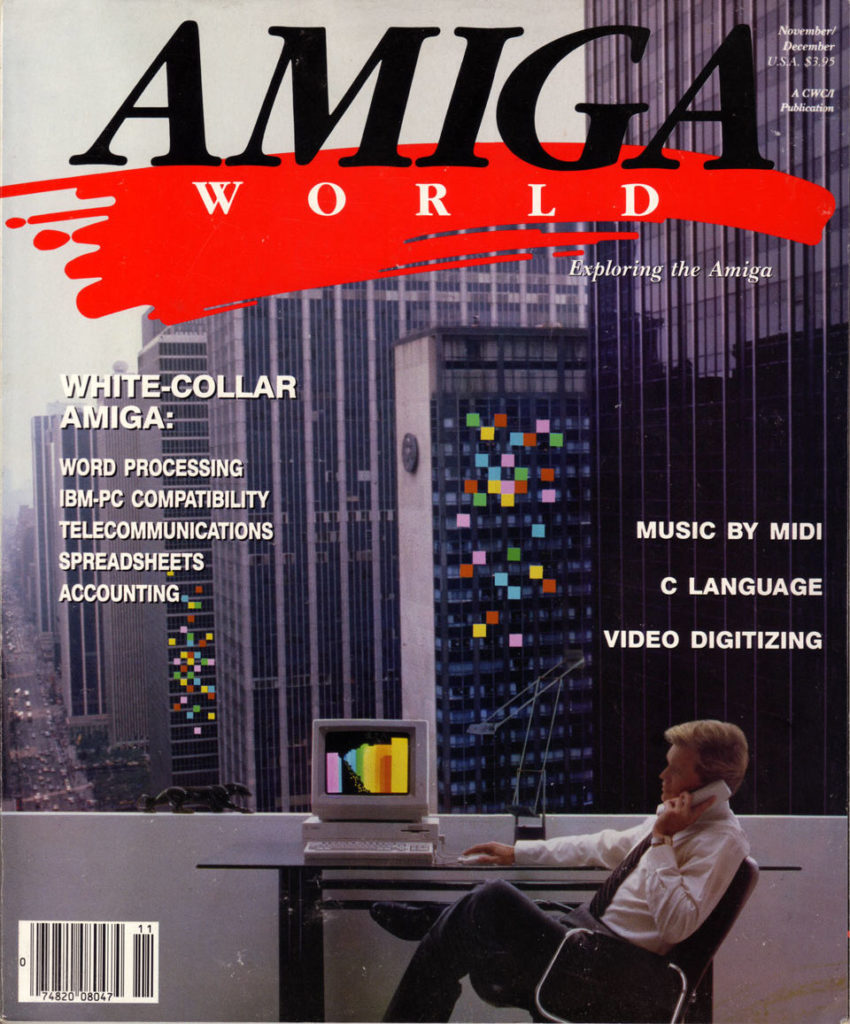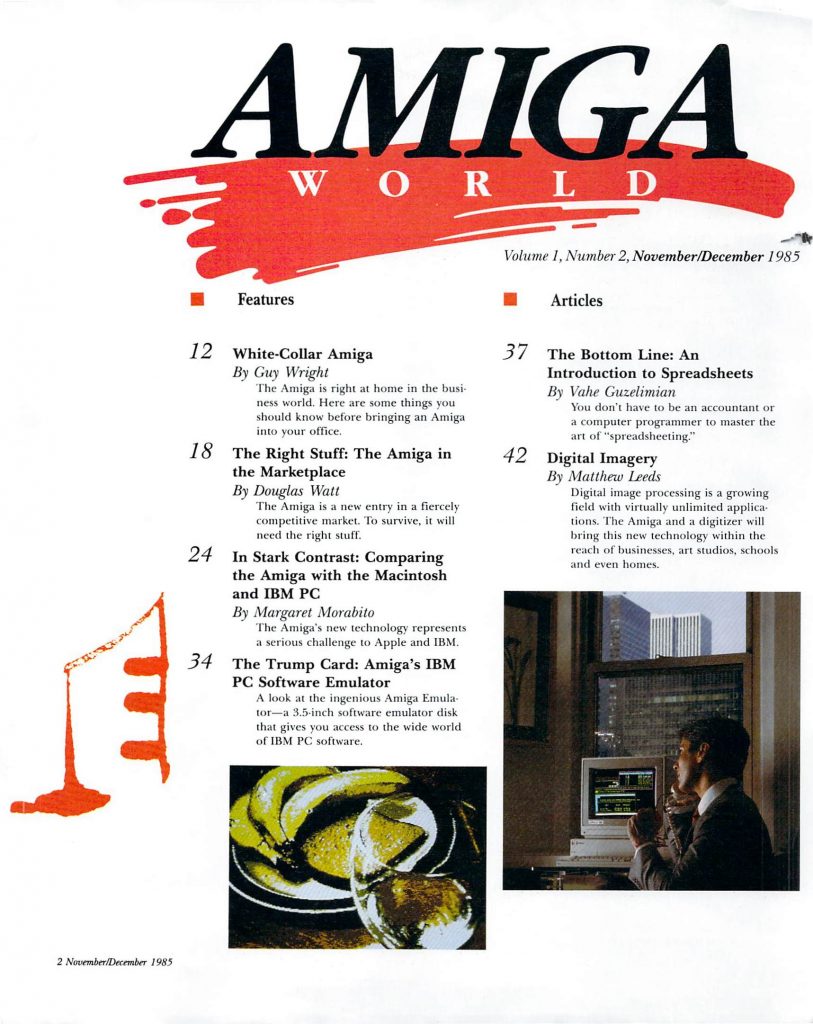Source: Amiga World – Volume 1, Number 2 – November December 1985
Amiga World was really the main Amiga magazine in the U.S. 1985 was very early in the life of the Amiga and the Amiga 1000 was the only model available at that time. The November/December issue of Amiga World includes the following:
Features
- White-Collar Amiga – Some general tips on computerizing your business and utilizing the Amiga in particular. Includes recommendations on amount of memory you should have, the type of printer you should get, software selections, and more.
- The Right Stuff: The Amiga in the Marketplace – A look at current market trends and where the Amiga fits in.
- In Stark Contrast: Comparing the Amiga with the Macintosh and IBM PC – At this point in time, the Amiga was really the best computer. It had the same processor as the Macintosh but far superior graphics and sound capabilities. It was also much cheaper. Some argue it was poor marketing that killed the Amiga but in the long run it was Commodore’s lack of R&D budget. With every Amiga generation the competition got a little closer until by the early 90s the Amiga really wasn’t technically superior any longer. But the original IBM PC and Apple Macintosh really couldn’t hold a candle to the Amiga 1000.
- The Trump Card: Amiga’s IBM PC Software Emulator – The Amiga Transformer was an IBM PC emulator. A pretty novel product for the time. Ultimately, various bridgeboards would become available for the Amiga that turned the Amiga into a combo Amiga/DOS machine.
Articles
- The Bottom Line: An Introduction to Spreadsheets – The spreadsheet was arguably the first killer app for the personal computer. This article doesn’t review a particular product but just gives a general overview of what spreadsheets can do.
- Digital Imagery – An overview of digitizing analog sources such as video and still images. Relatively inexpensive hardware could be added to the Amiga to accomplish this. Trivial today but impressive technology at the time.
- Music by MIDI: The Marriage of Talent and Technology – The Atari ST seemed to become the main choice for those seeking MIDI capability, largely due to its cheaper price and built-in interface. However, the Amiga was just as capable.
- Cherry Lane Technologies: Maestros of Innovative Music Software – A look at Harmony, one of the first music packages for the Amiga.
- Programming in C: Speaking the Amiga’s Language – C was heavily used for software development on the Amiga whereas in the previous 8-bit generation of computers, programming in assembly was pretty much a necessity. Even on the Amiga, things like games would continue to be written primarily in machine language.
- Metacomco: Developers of AmigaDOS – It wasn’t Commodore that developed AmigaDOS but a small company called Metacomco. They also provided initial cross-development environments, a macro assembler, ABasiC, Pascal and Lisp for the Amiga.
- Accountability: Keeping Track of Small Businesses – An overview of accounting software and its capabilities and how to select the right package for your business.
- Review: Textcraft – A review of an early word processor for the Amiga.
Columns
- Avision – The premiere of the Amiga on July 23, 1985 at the Vivian Beaumont Theater. In addition to Commodore executives, artist Andy Warhol and musicians Michael Bodicker and Tom Scott were special guests among others.
- Zeitgeist – The present and future of AmigaWorld.
- Protocol – An introduction to telecommunications and the types of software available for that purpose (terminal software, BBS software, etc.).
Departments
- Digital Canvas – A look at artwork created on the Amiga. This month featuring the work of Sheryl Knowles, Senior Graphic Artist at Commodore.
- Help Key – Questions and answers about the Amiga, including topics such as disk drives, monitors, networking and more.

…and more!




